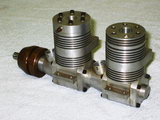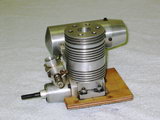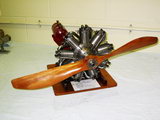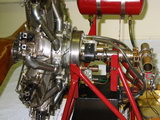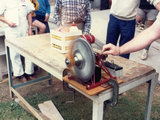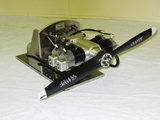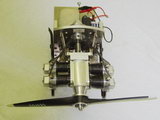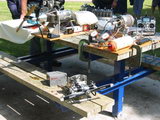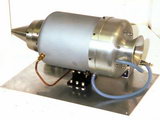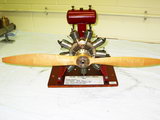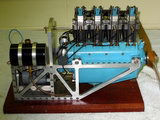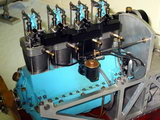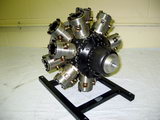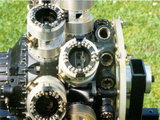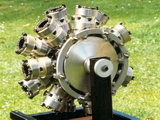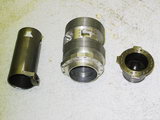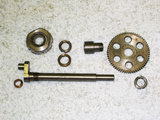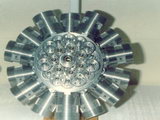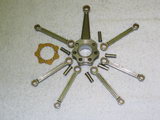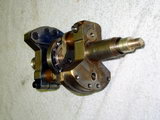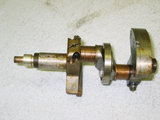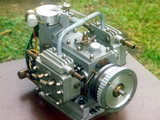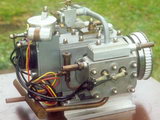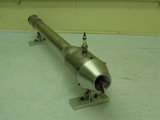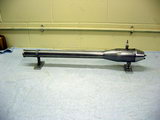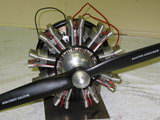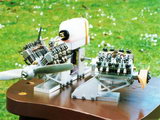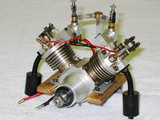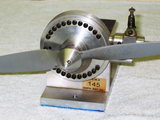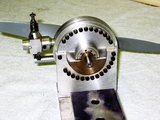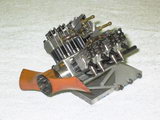Tribute to Engine Builder:
Allan Roberts (New Zealand)
Last Update: July, 2005.
This page showcases the amazing diversity in the engine building work of Allan Roberts.
The photos and the descriptions of the engines on this page were most kindly provided by another exceptional Kiwi engine builder, Murray Lane. Click here for a sample of Murray's work.
Click on any photo to view the larger version; click on the label the photo below to read a little mode about the engine (many will go to the same text).
Allan was born in England and shifted to Australia with his folks when he was four. There he served his time as a tool maker. I have known him since 1987 when he came to New Zealand to oversee the installation of machinery for the first aluminium can factory in the country. He spent the period '93 to '96 in South Africa, doing the same thing there. Once the factories were up and running, he assumed the managerial position responsible for the can manufacture operation and performance. The NZ factory supplies to many countries around the Pacific rim.
Allan's first engine was the 60, made in 1972. This was followed by the twin 120. The Mason Mastiff and Chennery Gnome had been completed, and the Blackmore Bentley started before he came to NZ in 1987. The Gypsy was made while he was in South Africa. Apart from the Bentley and the Hercules, Allan took only a year or less to make all the rest.
Allan took his Bentley to the Midlands Model Engineering Exhibition around 10 years ago where it was presented with the top award.
He has been a guest speaker for many organisations, at which several of the engines are run. The Bentley runs and sounds like a multi-cylindered motor bike and starts very easily.
All machining has been carried out in his own workshop, under the house, which is just large enough to swing a cat.
His machines are very modest: a second hand Hercus lathe, which he had to do up about ten years ago, and a RF25 mill/drill which he bought new. Add to this a Ryobi bench drill which is only good for small holes. Both the lathe and the mill have had their feet jacked up to make the machines a bit more accurate. A digital read out was fitted to the mill after shifting to SA.
The Hercules was finished to its present state before he went to SA. The reduction housing fits over the drives to the sleeves and all 21 shafts fit perfectly in the bearings in the housing. This engine was made before the DRO was fitted to the mill. I guess being a tool maker by trade helps, but he has not been actively involved in this type of work professionally for a long time.
I keep having a dig at him to finish the Hercules, but like me, he has spent most of the last couple of years repairing RC trainers each week ready for the following weekend. Boy are we ever sorry we got mixed up in such a soul destroying hobby. Of course we both blame each other for starting, and are waiting for each other to say, 'that's it, no more'!
Murray Lane, Auckland, New Zealand, July 2005.
About The Builder
If you were impressed with the engines, prepare to be humbled when you read about the machinery Allan made them on. Here's the story as told by Murray:
About The Engines
60 single
120 twin
6.5cc sleeve valve single
Airdisco V8 (two)
Bentley BR2 rotary
Hercules 730
De Havilland Gypsy
Satra 440
Gnome 'Monosoupape' B2 rotary engine
V12 air cooled engine
Roberts 9 cylinder air cooled radial engine
Vega twin
Wankel rotary aero engine
Jet FD 3-64
Turbo prop engine
Pulse jet
Mason Mastiff
Engine collection
